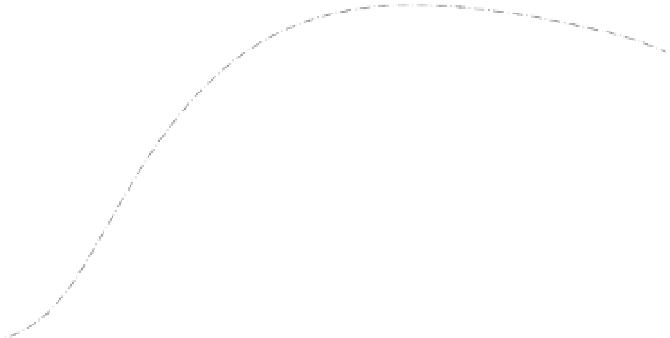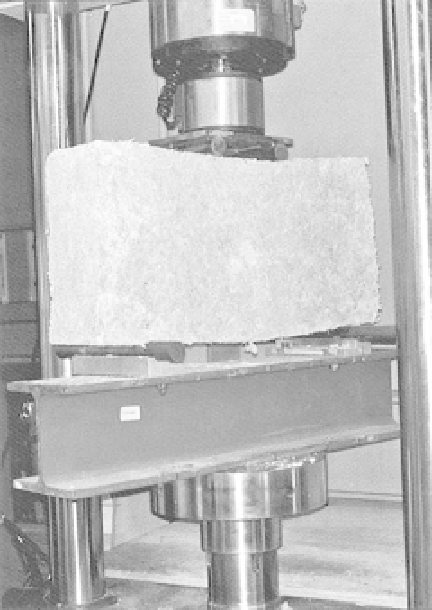Agriculture Reference
In-Depth Information
ruption before breaking. The material is not
fragile and flexes without breaking.
This light and supple material is distorted
easily and would appear to be particularly
interesting in the construction industry: the
structure can be distorted without giving rise
to significant constraints and without causing
the material to crack. It is therefore adaptable
and these properties may qualify it for use as
a building material in areas prone to
earthquakes.
Finally, it should be emphasized that the
binder used is one that sets in air; that is to say,
through a chemical reaction with CO
2
in the
atmosphere. These reactions are slow to take
place, as they are reliant on the diffusion of
CO
2
to the interior of the material. It has been
shown that resistance increases gradually over
a period of 6 months, before attaining 80%
of the total resistance (Fig. 17.10). This char-
acteristic is holding back the uptake of this
product by the construction industry, whose
need to realize turnover imposes a faster time-
table of work. Work is currently under way to
produce binding agents with equally good per-
formance but which set faster.
Thermal behaviour
From a thermal point of view, hemp cement
has two advantages related to its porosity.
Firstly, the density of pores allows a lot of air to
be stockpiled, providing excellent insulation in
much the same way as was discussed for hemp
wool. In addition, the range of pore sizes -
ranging from the micrometre (intra-particular
porosity of hemp and the binder) to the
Fig. 17.9.
Flexion tests on hemp bricks.
18
16
2 years
14 months
9 months
18 days
14
12
10
8
6
4
2
0
0
5
10
15
20
25
Displacement (mm)
Fig. 17.10.
Evolution of the resistance to compression over time.







































